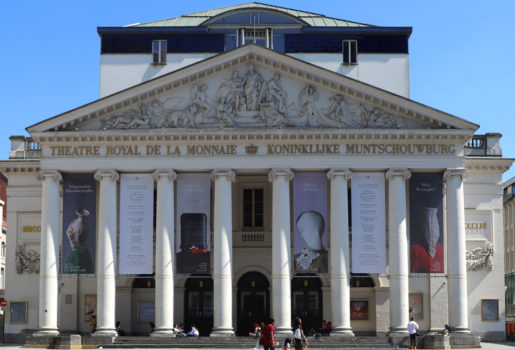Sur le site de Robert (Bob) Wilson, metteur en scène de théâtre, dramaturge et artiste de renom, décédé à l’âge de 83 ans le 31 juillet 2025., on peut lire que parmi les projets en préparation, se trouvait un Tristan et Isolde de Richard Wagner qui doit être donné dans le cadre d’une coproduction internationale entre plusieurs maisons d’opéra. La première est prévue le 5 février 2026 au Théâtre national slovène d’opéra et de ballet de Ljubljana. Les rôles-titres seront interprétés par Maida Hundeling et Bryan Register, les autres rôles principaux étant remplis par Monika Bohinec, Dubravka Šeparović Mušović, Petar Martinčič, Giorgio Surian, Jože Vidic et Nebojša Babić. Les autres co-producteurs sont le Teatro Real (Madrid), l’Opéra de Wroclaw (Pologne) et La Monnaie.
Bob Wilson est un vieil habitué de Bruxelles. Quelques semaines après la création à Avignon le 25 juillet 1976, Einstein on the Beach était présenté à La Monnaie les 28, 29 et 30 septembre. Il reviendra plus tard pour le Prometeo de Luigi Nono (1997, Peter Eötvös et Ryan Kwabé), Aïda de Verdi (2002, Antonio Pappano), Alceste de Gluck (2004, Ivor Bolton).
Peu d’informations sont données sur le projet wagnérien. Le site ne donne qu’un texte d’introduction signé par le dramaturge Konrad Kuhn :
“The subject is loosely derived from a medieval 13th-century romance, connected to the mythical saga of King Arthur. Wagner was inspired to the work by the experience of a deep mutual understanding and (probably platonic) love affair with Mathilde Wesendonck, the wife of a rich patron in Zurich. The central theme is the contrast of the mundane “day” (ambitions and thriving for honor and glamour) with the “night” (the quest for truly deep emotions in the mystical merging of two persons into one, a sort of afterworld where all human longings finally come to rest). The influence of Wagner’s new approach to treat the orchestra as an autonomous symphonic force rather than accompanying the singers and his pushing the boundaries of harmonic rules to the verge of atonality caused a revolution in the history of music. The famous ‘Tristan Chord’ that opens the prelude and forms one of the central leitmotifs of the opera represents a dissonance that cannot be solved but leads constantly to new dissonances. It is the expression for an impossible love and the yearning for unlimited union with the loved one that seems to be possible only in some other world.”
